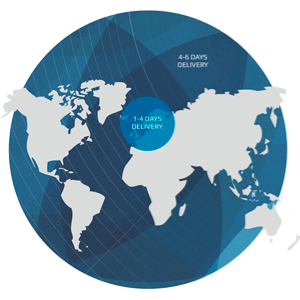Vietnam hopes to limit need for meat imports this year

 PIONEER MEIZHENG BIO-TECH (5 in1) JC0586 - Antibiotic tests 5 in 1 / Rapid tests for determining the residual amount of β-lactams, tetracyclines and cephalexin in milk, whey
PIONEER MEIZHENG BIO-TECH (5 in1) JC0586 - Antibiotic tests 5 in 1 / Rapid tests for determining the residual amount of β-lactams, tetracyclines and cephalexin in milk, whey Express tests for determining the residual amount of β-lactams, tetracyclines, chloramphenicol, streptomycins in milk, whey
Express tests for determining the residual amount of β-lactams, tetracyclines, chloramphenicol, streptomycins in milk, whey
“Demand for imported MEAT and meat products is unlikely to rise sharply in 2022,” the Foreign Trade Agency under the Ministry of Industry and Trade said in a statement.
Last year, Vietnam imported more than 700,000 tons of meat worth almost $1.3 billion and the Foreign Trade Agency under the Ministry of Industry and Trade hopes to keep the situation under control in 2022, although the global market is under pressure due to multiple factors such as like covid-19 , supply disruptions and rising prices due to the Ukrainian crisis.
The United States, Brazil, RUSSIA , India and Germany were the top five meat suppliers to Vietnam in 2021. In developing its forecast, the Foreign Trade Agency pointed to the COVID-19 pandemic, which has led to a reduction in catering services, caused an oversupply, and made transportation difficult due to the disruption of supply chains.
The agency said Vietnam imported 53,700 tons of meat and meat products worth US$114.13 million in January , up 4.3% in volume and 17.9% in value compared to the previous month. India was the largest of 37 foreign suppliers of meat and meat products to Vietnam.
The agency said the livestock sector will continue to face challenges this year as the African swine fever (ASF) pandemic and epidemic remain pressure factors. In addition, domestic production and intermediate costs are still high. Meanwhile, trade experts predict that Vietnam's livestock industry will continue to recover in 2022 as ASF prevention measures have proven beneficial in helping large-scale farms avoid large-scale outbreaks.
Statistics show that there are about 28 million pigs raised in the country, with meat production largely meeting domestic demand. This may limit the need for pork imports, which last year amounted to almost 150,000 tons of frozen pork. Russia was the largest supplier of frozen pork to Vietnam, accounting for nearly 40% of the country's total frozen pork imports, followed by Brazil with 15.7%, Germany with 12.4%, CANADA with 10.6% and Poland from 4.6%.
Read together with it:
- An HSE expert reported on the "evolution of inequality" in access to healthcare.An HSE researcher analyzed Russians' access to healthcare over a ten-year period. In 2021, the influence of financial factors became noticeable for the first time: low income reduces the likelihood of visiting a DOCTOR.Over the ten years from 2011 to 2021, the number of Russians requiring medical care but not receiving it remained virtually unchanged, according to a study by Lyudmila Zasimova, hea...
- The IEA sees a risk of a decline in oil production in Russia due to sanctions.The IEA sees a risk of reduced oil production in RUSSIA due to US sanctions , but maintains its production forecast. According to the IEA, Russian oil exports will remain unchanged.There is a "significant downside risk" to Russia's oil production forecast due to US sanctions, the International Energy Agency (IEA) said in a report.BLOOMBERG . The agency's experts believe that the latest US sanction...
- Russian agriculture: self-sufficiency continues to growThe industry has a track record of implementing new technologies and increasing productivity. RUSSIA is already confidently self-sufficient in grain, MEAT, fish, vegetable oil, and SUGAR. Grain and vegetable production is also forecast to be higher this year, despite unfavorable weather conditions in some regions. The Ministry expects historic highs for some crops and continues to support agricult...
- Rosselkhoznadzor has banned meat imports from two Belarusian enterprises due to violations.In addition, three other Belarusian producers are now subject to strict laboratory monitoring due to initial deviations: azithromycin was found in poultry MEAT from Druzhba Poultry Farm, and the pesticide imidacloprid was found in honey from Pchalyar Polachchyny Farm. Powdered MILK from Luninetsky Dairy Plant was also found to containcoli bacteria . These measures were taken at the request of the ...
- США объяснили снятие санкций с проекта АЭС в Венгрии с участием РоссииСША хотят, чтобы строительство АЭС «Пакш-2» завершилось, это необходимо, чтобы Венгрия стала энергетически независимой, заявил Рубио. Орбан сообщал, что после встречи с Трампом добился исключения из санкций Соединенные Штаты вывели из-под санкций проект АЭС «Пакш-2» в Венгрии, подтвердил госсекретарь Марко Рубио после встречи министров иностранных дел стран G7 в Канаде. Ранее об этом говорил венге...
- Экспортные цены на уругвайскую говядину достигли рекордных значений в октябреЭто второй лучший показатель 2025 года после пика, достигнутого в августе. По предварительным данным INAC, на прошлой неделе экспортная цена составила 5350 долларов США. Данные INAC, которые показывают фактически выполненные поставки (в отличие от экспортных заявок, где указаны как отгруженные, так и неотгруженные товары), указывают на падение объёма экспорта мяса в октябре на 28% — до 3......

























































